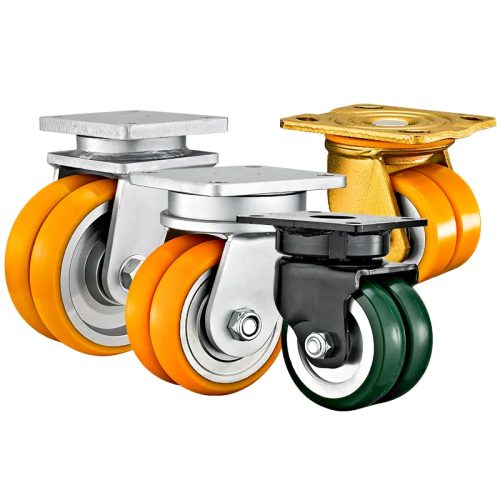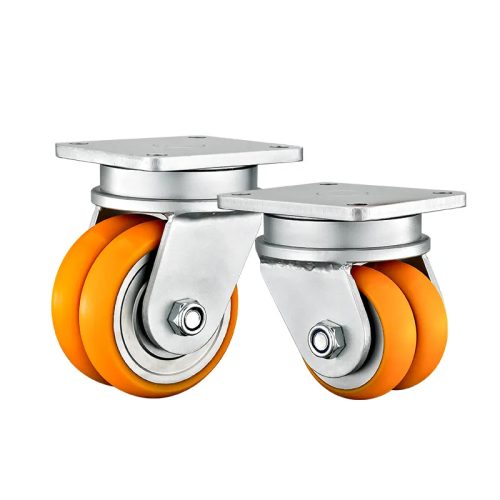Twin-wheel casters have come a long way from their conventional designs, evolving with innovative features and materials that meet the changing demands of various industries. In this article, we’ll explore the latest innovations in twin-wheel caster design, providing a glimpse of what’s new and exciting in the market.
- Advanced Wheel Materials
Traditional caster wheels were typically made of rubber, nylon, or polyurethane. However, modern twin-wheel casters now incorporate advanced wheel materials such as thermoplastic elastomers (TPE) and high-performance rubber compounds. These materials offer enhanced durability, load-bearing capacity, and resistance to wear and tear.
- Quiet and Smooth Operation
Noise reduction has become a significant focus in caster design. Innovations include the use of precision ball bearings and specially engineered wheel profiles to reduce vibration and noise during movement. These quiet casters are ideal for applications where noise is a concern, such as hospitals, offices, and libraries.
- Directional Control Technology
Recent innovations in twin-wheel caster design include improved directional control technology. This allows for smoother and more precise maneuverability, even in tight spaces. It’s especially beneficial in applications where ease of movement and precise positioning are essential, such as medical equipment and furniture.
- Ergonomic Design
Ergonomics is a key consideration in modern caster design, with an emphasis on user comfort and safety. Innovations in ergonomics include caster wheels with shock-absorbing features, reducing the impact of vibrations and shocks on both the equipment and the user. This is particularly important in applications involving medical carts and adjustable office chairs.
- Customization Options
Manufacturers now offer greater customization options, allowing customers to select the specific features and materials that best suit their needs. This level of customization extends to load capacity, wheel materials, colors, and even branding. The ability to tailor twin-wheel casters to meet unique requirements is a significant development in the market.
- Easy Maintenance and Replacement
Modern twin-wheel casters are designed for easy maintenance and replacement. Many models feature quick-change systems that allow users to replace individual wheels or swivel assemblies with minimal downtime. This is a cost-effective solution for businesses that rely on the continuous operation of caster-equipped equipment.
- Sustainability
As environmental consciousness grows, caster manufacturers are exploring more sustainable materials and production processes. Some twin-wheel casters are now made from recycled or recyclable materials, contributing to a greener and more eco-friendly market.
- Smart Caster Technology
The integration of IoT (Internet of Things) technology is on the horizon for twin-wheel casters. Smart casters equipped with sensors and data collection capabilities can provide real-time information on load distribution, wear and tear, and movement patterns. This data can be used for preventive maintenance and optimizing equipment usage.
In conclusion, the market for twin-wheel casters is evolving to meet the ever-changing needs of industries and users. Innovations in materials, quiet operation, directional control, ergonomics, customization, maintenance, sustainability, and smart technology are shaping the future of twin-wheel caster design. These advancements enhance the performance, safety, and user experience, making twin-wheel casters a critical component in numerous applications across various sectors.


